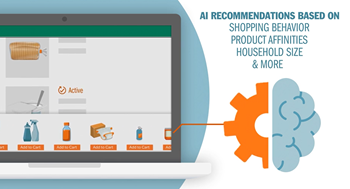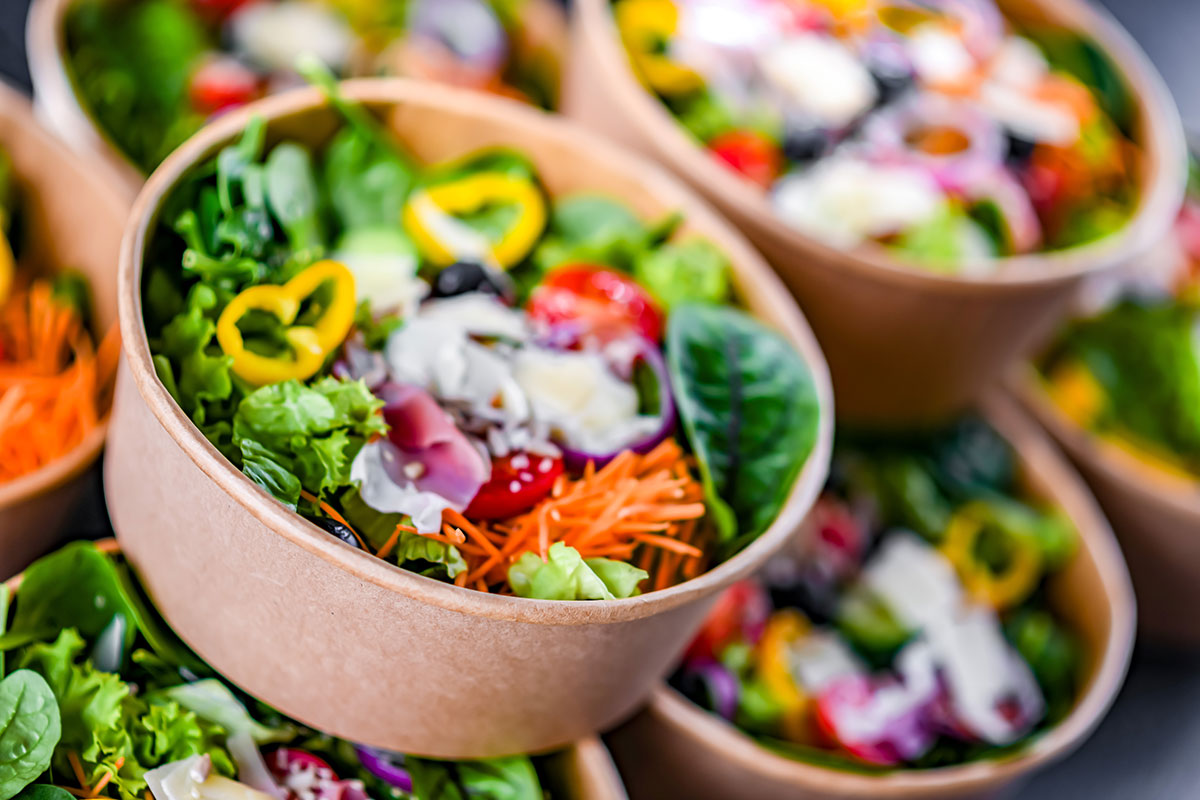By: Mark Baum, Chief Collaboration Officer and Senior Vice President of Industry Relations, FMI
 The stage is set for more robust, digital food retail experiences in 2022, fueled in-part by last year’s growth in online grocery shoppers. Retailers’ technology advancements, in response to the pandemic, and increased shopper access to smartphones, served as key enablers for the online grocery shopping penetration rise from half (52%) to nearly two-thirds (64%), according to U.S. Grocery Shopper Trends 2021 (Trends).
The stage is set for more robust, digital food retail experiences in 2022, fueled in-part by last year’s growth in online grocery shoppers. Retailers’ technology advancements, in response to the pandemic, and increased shopper access to smartphones, served as key enablers for the online grocery shopping penetration rise from half (52%) to nearly two-thirds (64%), according to U.S. Grocery Shopper Trends 2021 (Trends).
In-Store Shopping vs. Online Shopping
According to Trends, when shoppers were asked to rate the advantages of in-store versus online shopping, the core benefits of online shopping trips were time savings and safety. Although many grocers still have online experience improvements to incorporate, it’s likely we’ll see familiarity with online grocery shopping and pandemic uncertainty further solidify shopper propensity to shop online.
We recognize that most retailers and brands have activated at least a basic digital purchasing function. However, many are in the process of strategizing and in some cases, operationalizing the next level of functionality to gain and retain shoppers.
Connecting In-Store and Online Experiences
With more customers feeling comfortable returning to stores, an ideal hybrid opportunity has emerged for shoppers who desire the efficiency of online AND connected, engaging experiences traditionally delivered in-store. This “best of both worlds” approach can be delivered to shoppers through retailer and brand implementation of a full-basket, auto-replenishment platform.
Online auto-replenishment platforms enable consumers to set their most regularly used items, including grocery products, on a digital shopping version of cruise-control, essentially eliminating the more mundane elements of the trip, so they can focus on the more tactile and sensory elements of the in-store experience Importantly, shoppers select a replenishment cadence and quantity, are reminded prior to fulfillment, and have the option to opt out or modify their orders, which takes lifestyle or pattern changes into account.
When shoppers have streamlined their routinely purchased items through auto-replenishment, both the time saved online, and their in-store trips can be spent on desired experiences and product discovery. FMI Industry Partner Associate member, Replenium provides an auto-replenishment platform that uses machine learning to create personalized product discovery experiences online, which is ideal for in-store experiences to complement this approach.
“The auto-replenishment opportunity enables food marketers to further engage a growing cohort of online shoppers in a way that creates predictable, protected revenue streams and promotes loyalty,” said Kate Walker, Replenium’s Director of Insights.
Consumer Interest through Auto-Replenishment
A recent shopper research study of 2,307 Amazon Prime members conducted by Replenium through Kantar Marketplace finds that 26% of shoppers would utilize an auto-replenishment offering if it was available from their local grocer, for the primary purposes of routine grocery trips and to purchase products that are often out of stock.
In the same study, 67% of shoppers who had used auto-replenishment functionality in the past six months (think programs like subscribe & save, auto ship or schedule & save) stated that the service was either impactful or extremely impactful to their retailer or brand loyalty.
Next Steps
Prioritizing investments to address online grocery shopping trends can be challenging, but innovations that keep online shoppers returning, while creating equally compelling in-store opportunities, should be explored as retailers and brands advance their digital strategies.
Continue the conversation on ecommerce and consumer trends at the upcoming FMItech program, which will be held during the Midwinter Executive Conference, March 28-31, 2022, in Orlando.


 Industry Topics address your specific area of expertise with resources, reports, events and more.
Industry Topics address your specific area of expertise with resources, reports, events and more.
 Our Research covers consumer behavior and retail operation benchmarks so you can make informed business decisions.
Our Research covers consumer behavior and retail operation benchmarks so you can make informed business decisions.
 Events and Education including online and in-person help you advance your food retail career.
Events and Education including online and in-person help you advance your food retail career.
 Food Safety training, resources and guidance that help you create a company food safety culture.
Food Safety training, resources and guidance that help you create a company food safety culture.
 Government Affairs work — federal and state — on the latest food industry policy, regulatory and legislative issues.
Government Affairs work — federal and state — on the latest food industry policy, regulatory and legislative issues.
 Get Involved. From industry awards to newsletters and committees, these resources help you take advantage of your membership.
Get Involved. From industry awards to newsletters and committees, these resources help you take advantage of your membership.
 Best practices, guidance documents, infographics, signage and more for the food industry on the COVID-19 pandemic.
Best practices, guidance documents, infographics, signage and more for the food industry on the COVID-19 pandemic.
